
WAIT! If you’re a subscriber reading this in email format, before reading any further, please click on the title of the post right above in order to view the blog in the glory it was meant to have on the actual blog website.
Happy New Year! I thought I’d send a little feathered beauty your way and some thought-provoking quotes to start off your 2015.
On why you should bird more in 2015:
“Looking at birds really takes away sadness in a lot of us,” said a woman featured in Jeffrey Kimball’s film (The Central Park Effect), a breast-cancer sufferer who ushers fellow birders on ambling tours of the park.
“It was one of the rare times in an adult’s life when the world suddenly seems more magical rather than less,” says writer Jonathan Franzen, a self-proclaimed “born-again bird watcher,” of the first time he went birding.
On why you should take a child outside often this year:
“If a child is to keep alive his inborn sense of wonder, he needs the companionship of at least one adult who can share it, rediscovering with him the joy, excitement, and mystery of the world we live in.”
― Rachel Carson
On why you should watch less TV this year:
“There are some who can live without wild things and some who cannot. For us in the minority the opportunity to see geese is more important than television” …Aldo Leopold (Sand County Almanac)

“Maybe it’s time we put down the remote control and go someplace remote where we aren’t in control.”
–Anonymous
On why you should strive to give back to nature this year:
“In every walk with nature, one receives far more than he seeks.” -John Muir
“In all of nature there is something of the marvelous.” -Aristotle
“I speak for the trees, for the trees have no tongues.” – The Lorax
“It is in the wild places, where the edge of the earth meets the corners of the sky, the human spirit is fed.” ~Art Wolfe
“If future generations are to remember us with gratitude rather than contempt, we must leave them a glimpse of the world as it was in the beginning, not just after we got through with it.” -President Lyndon B. Johnson
Tread lightly this year, get outside, go birding, learn all you can about nature and be a participant in conservation!
There’s a lot going on in the woods,
Blake

Happy Owl-o-Ween!

The enchanting little fuzzy phantoms that are now visiting Rushton Woods in thrilling numbers wish you a very Happy Owl-o-Ween!
They also told me to tell you that your young chicks are invited to stop over at Rushton Farm on the night of November 15th from 7-9pm to check out this thing called owl banding during which the humans give each owl a magical silver anklet with numbers on it. The owls say they don’t really care for that part of the night but they’re looking forward to a beautiful performance by one owl in particular, named Ipod, who rumors say can sing all night long at the top of his lungs without getting tired!

They wanted me to share a preview of the performance here. We humans say that it sounds like a “toot”, but to their more refined ears, it’s much more than that.
Register for the Junior Birder Owl Banding Night, November 15th, by emailing me, Blake Goll (bhg@wctrust.org). Space is limited.
Hope to see you there! Trick-or-Toot!!
Blake
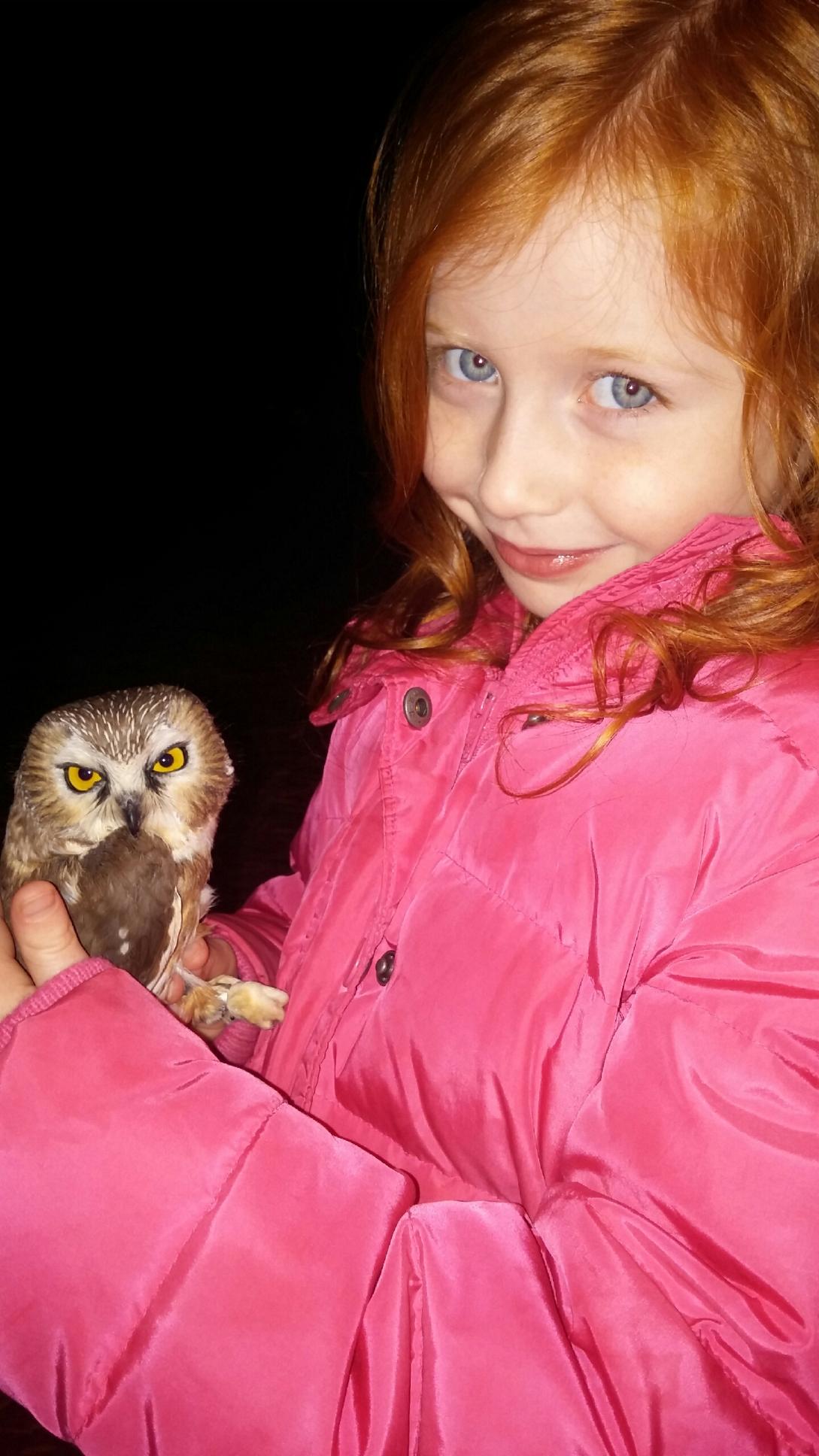
The Spirit of Autumn

WAIT! If you’re a subscriber reading this in email format, before reading any further, please click on the title of the post right above in order to view the blog in the glory it was meant to have on the actual blog website.
________________________________________________________
It is a beautiful crisp October day, with the changing leaves standing out in stark contrast against the somber, gray sky. As I stand in the driveway of the picturesque office of Willistown Conservation Trust, I am enchanted by the feathered feeding frenzy! The trees are alive with rustling leaves that magically morph into bustling birds, flitting here and there to the rhythm of the Autumn spirit. Two Blackpoll Warblers wizz by my head in an animated chase, enlivened by the crisp air in this moment and forgetting about the many more miles they have to go before their winter sojourn in the tropics.
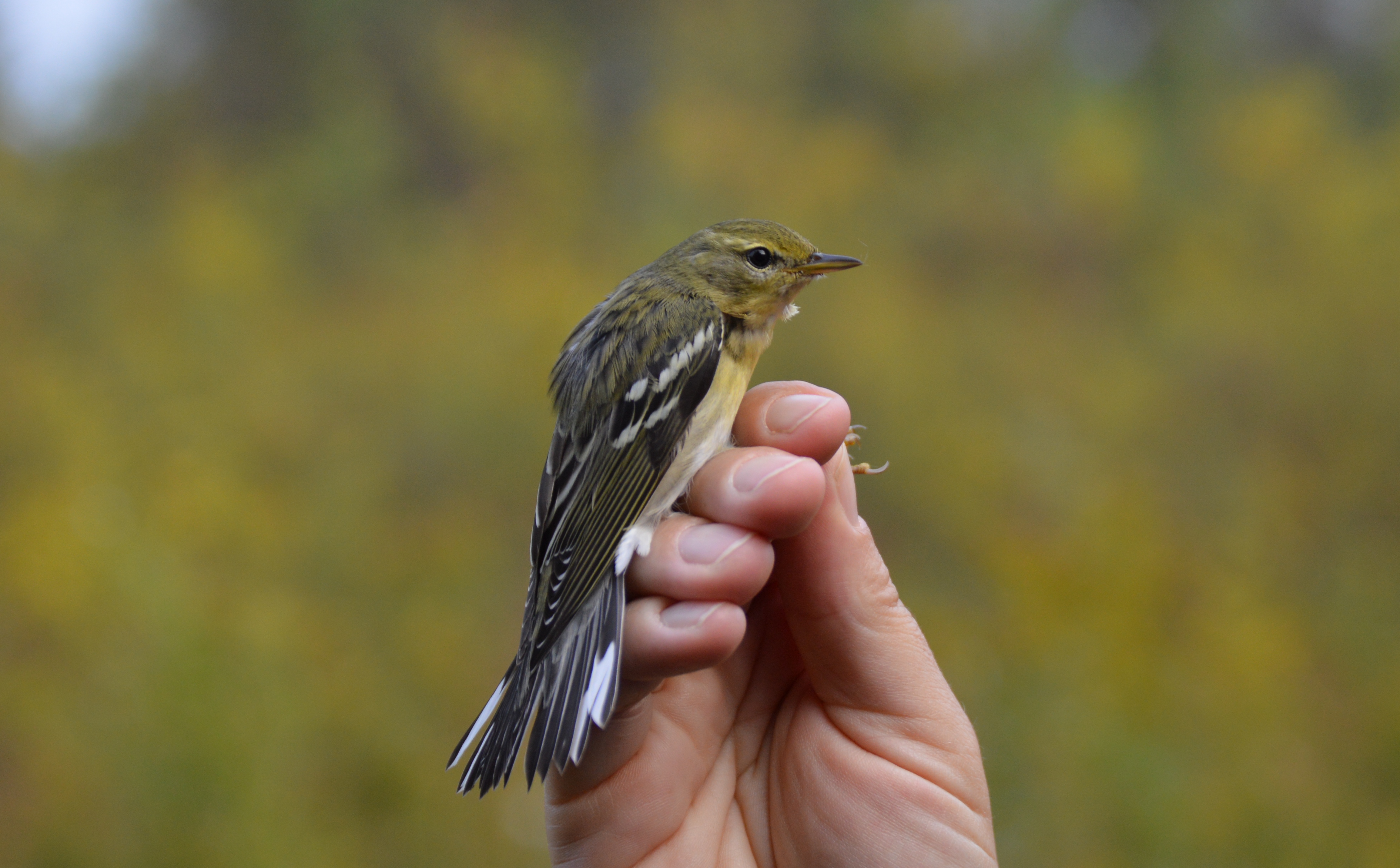
Many more warblers dance around in the upper reaches of the maple and hickory trees. The commotion of these strangers in the neighborhood stirs up the curious residents- the chickadees and titmice- who join the feeding flock. Perhaps the migrant flock found the resident chickadees and titmice first since these are the ones to trust when it comes to knowing where the best food sources are and where the predators are. Migrant flocks of birds are quite cunning like that. They must be. Their lives depend on it.
Tap. Tap. Tap tap-tap tap. Tap. My ears lead my eager eyes to a medium-sized woodpecker skirting its way up a dead tree trunk. The October shadows obscure the bird’s coloring from my view. Could it be a Yellow-bellied Sapsucker!? There have been many reports of these handsome migrants in the area!

Now my eyes are drawn to the Rudbeckia triloba (or Brown-eyed Susan) in the front bed of the office. Several flowers are nodding toward the earth and others bouncing up and down wildly under the weight of wild canaries! These are the resident goldfinches with their young of the year, voraciously harvesting the seeds of this wonderful native plant. I look up to my right where I see more movement in the willowy River birch from which a feeder hangs. More goldfinches are pecking at the birch catkins to extract nutritious seeds even as the bird feeder sways enticingly beneath them, filled with hulled sunflower seeds. You just can’t beat the opulent menu that nature offers for birds this time of year!

Looking out across the Trust’s native wildflower meadow, I see more old seed heads from the retired perennials bobbing up and down and small figures swooping around the golden grasses and diving in amongst the gray and amber stalks. I don’t grab my binoculars because I want to experience the whole of this pulse, rather than pick out the individual birds in this moment. I know there are mixed warblers, sparrows and more goldfinches out there in the meadow, and I am content to be wrapped up in the spirit of Autumn with child-like glee.
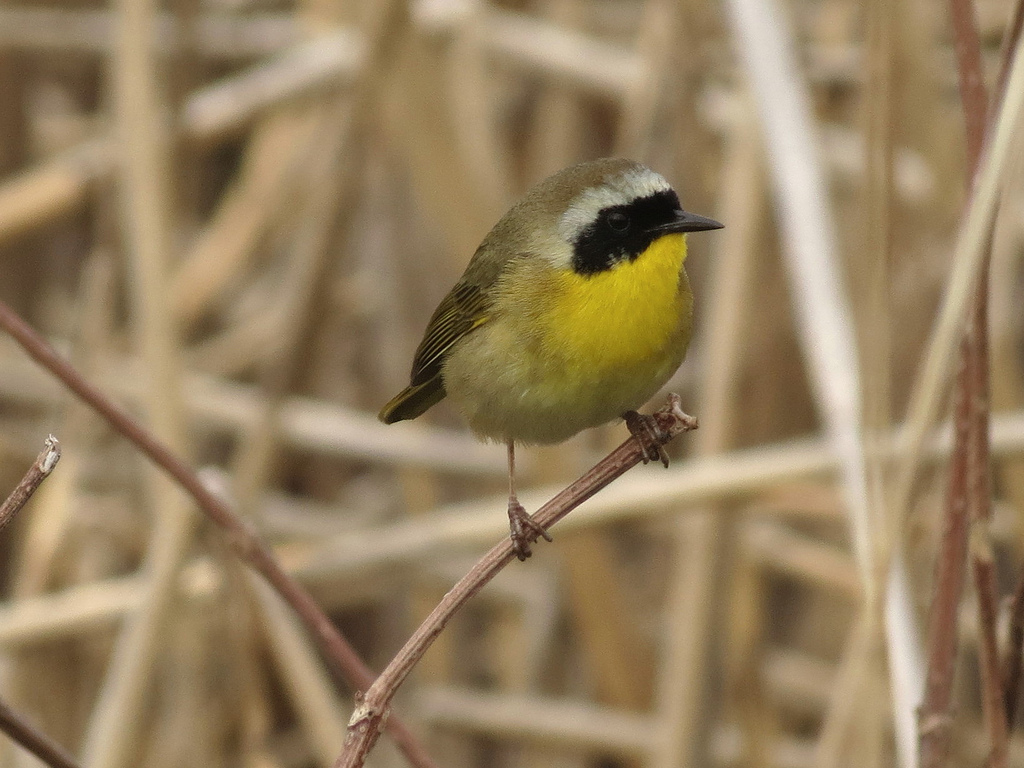
And I think to myself, what a wonderful landscape for these deserving creatures to relish. Our meadow will be mowed in early spring to keep the woody growth and invasive plants at bay, but for now its unmowed glory is a paradise providing shelter, seeds, insects and berries for countless small animals and birds. The insects themselves can find solace here; who knows how many praying mantis egg cases, underground bee burrows and silken cocoons are hidden safely amongst the leaf litter, ready to emerge in the new year and pass on their small but significant life force.

As I’m again enjoying the goldfinches feasting in the birch, a lovely Hermit Thrush silently enters the scene like an apparition and perches gracefully on a branch, gently and diagnostically bobbing its fox-red tail up and down to that same infectious pulse that seems to be rippling through this large flock of migrants – and now my heart.
This is the excitement that can come of a typical cloudy October day, when one simply tunes into the cycles of nature. Someone once told me,”never despise the day of ordinary things.” I say, when you invite birds and nature into your daily routine, the ordinary day becomes rare.

All of us banders at the Rushton banding station know this to be true. This fall season has been an exciting one with great species diversity (20 species one day!) and satisfactory numbers of migrants. The most we had in one day were 83 birds back in September when the Gray Catbirds were still going strong.
Now the catbird flow has tapered off, and the sparrows have entered the stage in full force including Lincoln’s, Swamp, Song, White-throated and even a Savannah! Field sparrows passed through earlier this fall.
The stream of warblers has also been slowing down, although last week we did catch a Magnolia Warbler, Black-and-white Warbler , Blackpoll Warbler and the usual Common Yellowthroats. This week’s warblers included Black-throated Blue, Magnolia, American Redstart and first of the season Yellow-rumped (Myrtle).
Wood thrushes have all passed through and have been replaced by Swainson’s Thrush, a few Gray-cheeked Thrush and tons of American Robins. We are expecting Hermit Thrushes, oodles of kinglets and loads more White-throated Sparrows to hop into our nets soon, followed by juncos and a Fox Sparrow or two to round out the season.
Noteworthy flyovers have included two regal Bald Eagles and a very mysterious Common Raven flying Southwest as it issued its guttural croaking call. Blue- headed Vireos serenaded us with their slow, playful song from the tops of the trees today. In the predawn, Bobolinks were heard over the farm on September 30th and an American Woodcock was heard one morning in mid-October. The Great Horned Owl sang to us many mornings during net setup.
People visitors, eager to see and learn about these migrating wonders, have been flocking to the banding station as usual. Visitors included the Birding Club of Delaware County, representatives from the Academy of Natural Sciences, businesses, Junior Birders, elementary school students and Universities like Villanova and UPenn. We even have a UPenn student analyzing stopover ecology data this season. This pertains to the timing and rate of weight gain in migrants during their stay at Rushton before continuing their migratory journeys. This type of data is revealed by same-season recaptures of birds.
Enjoy the following photo journal of the season highlights so far. Pretend you are birding! Hope to see you out there at Rushton (Tuesday and Thursday mornings through the end of October).
There’s a lot going on in the woods,
Blake





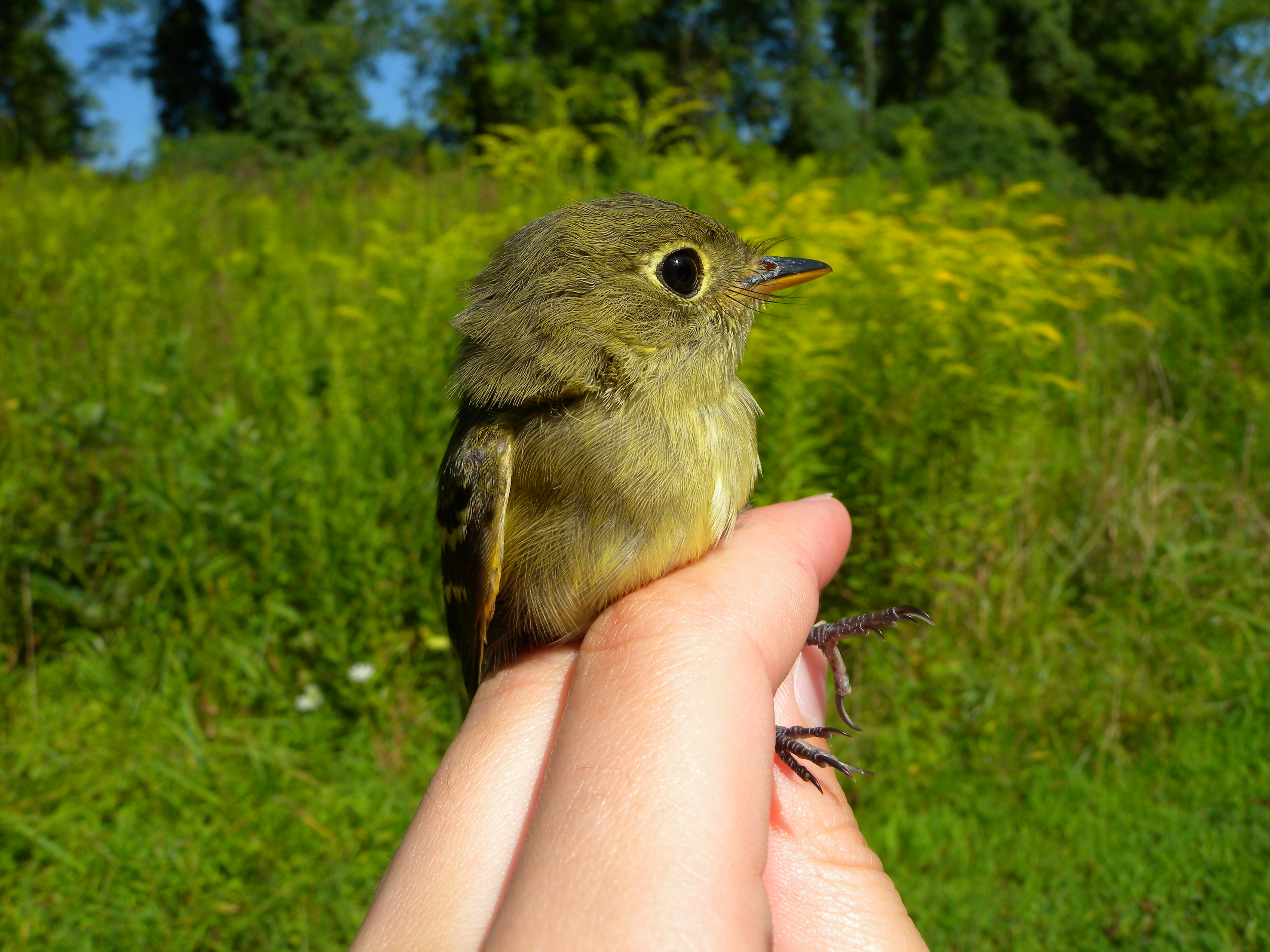
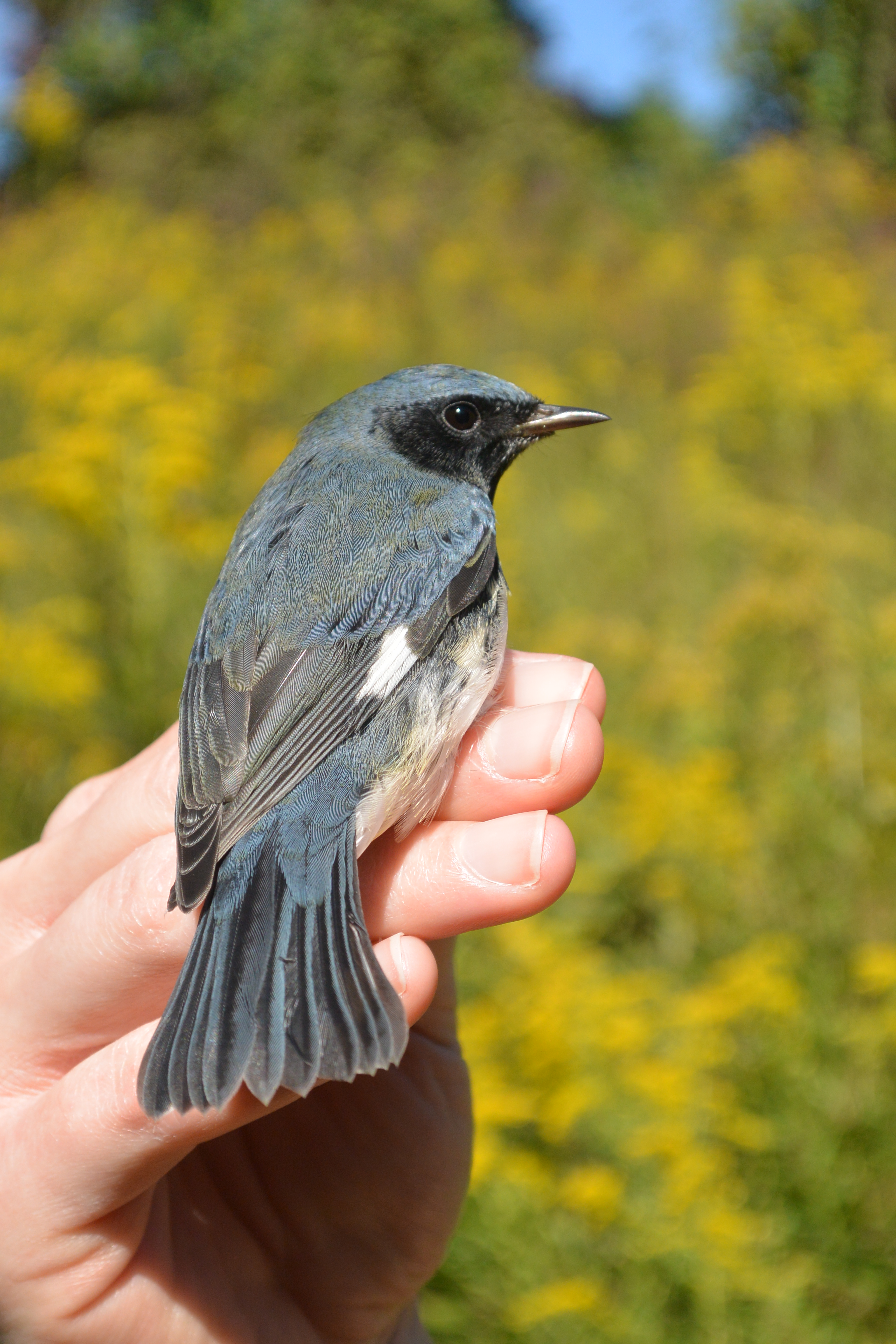
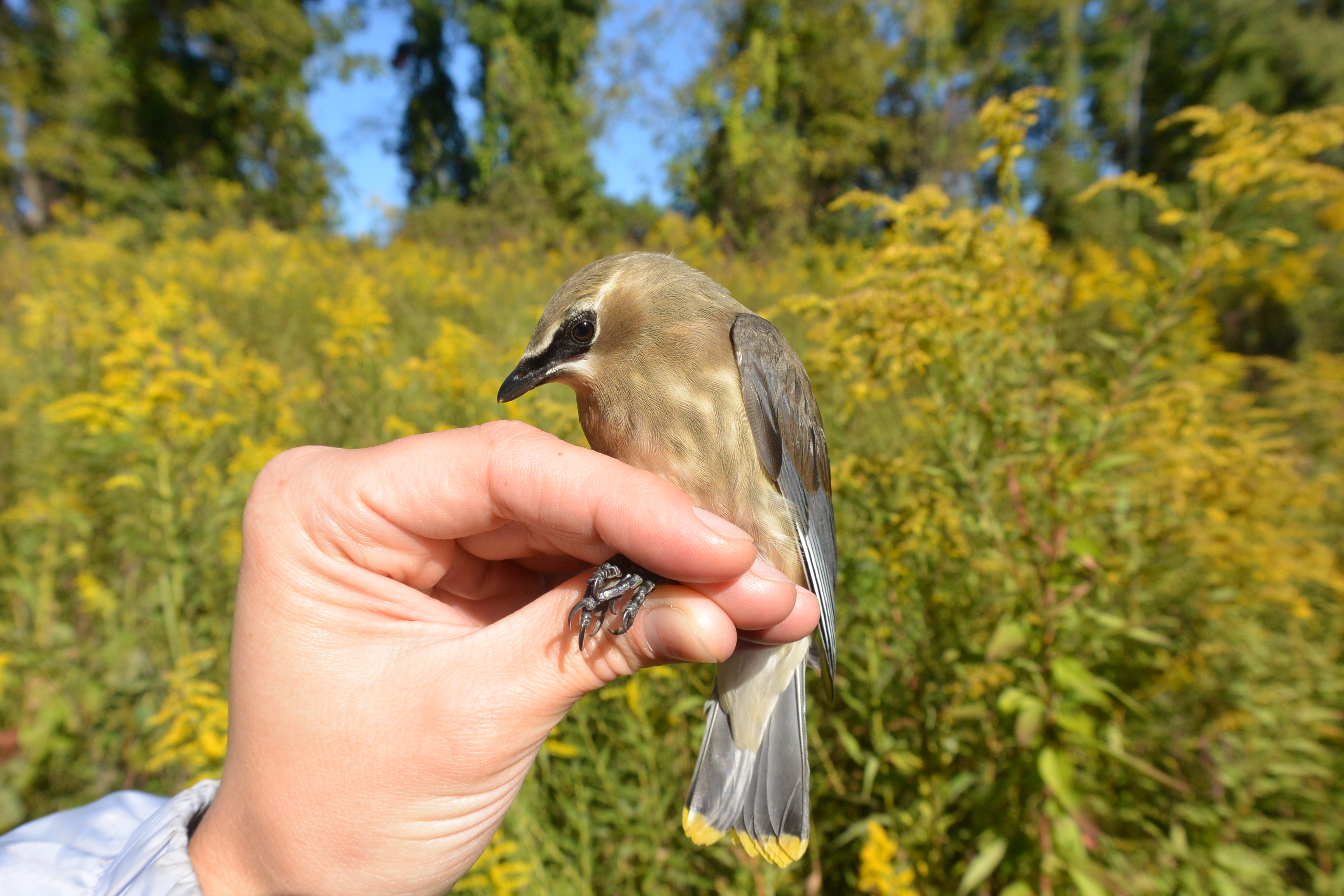

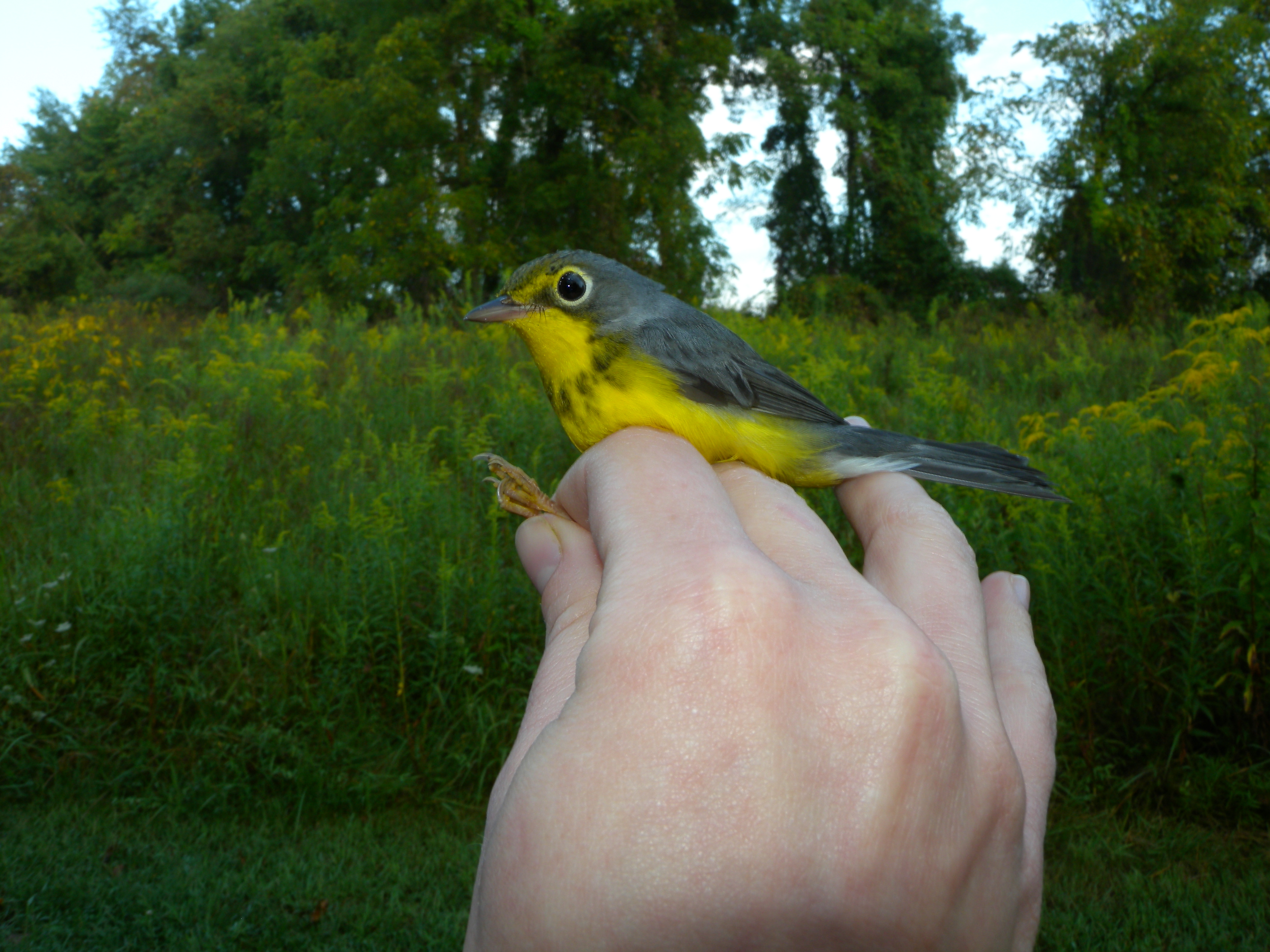
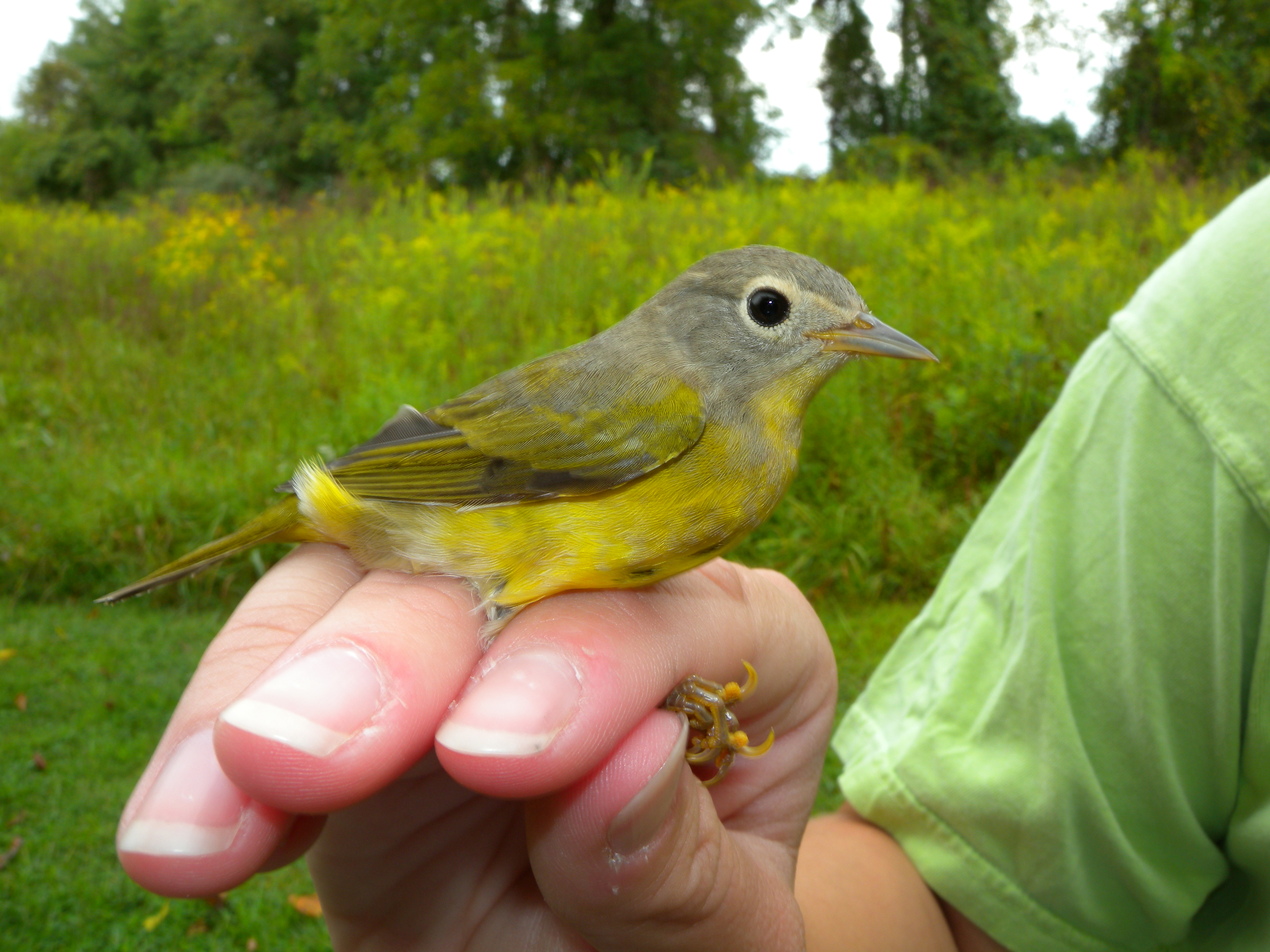

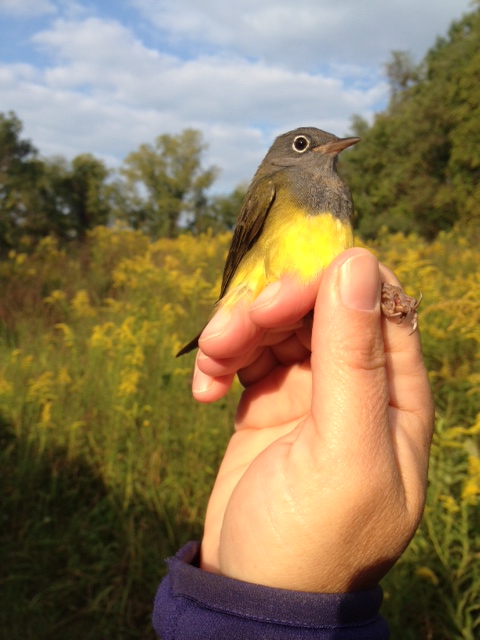

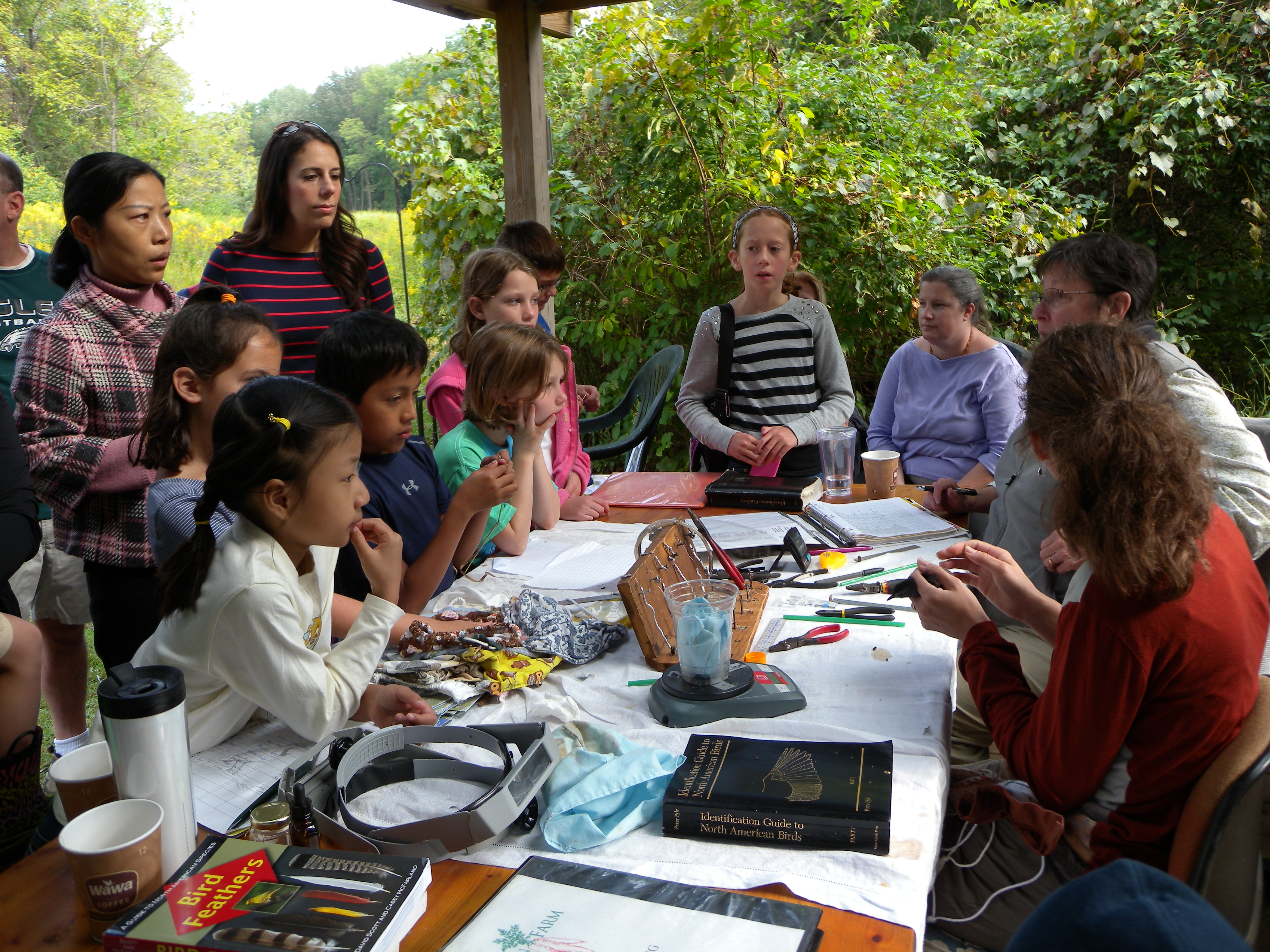
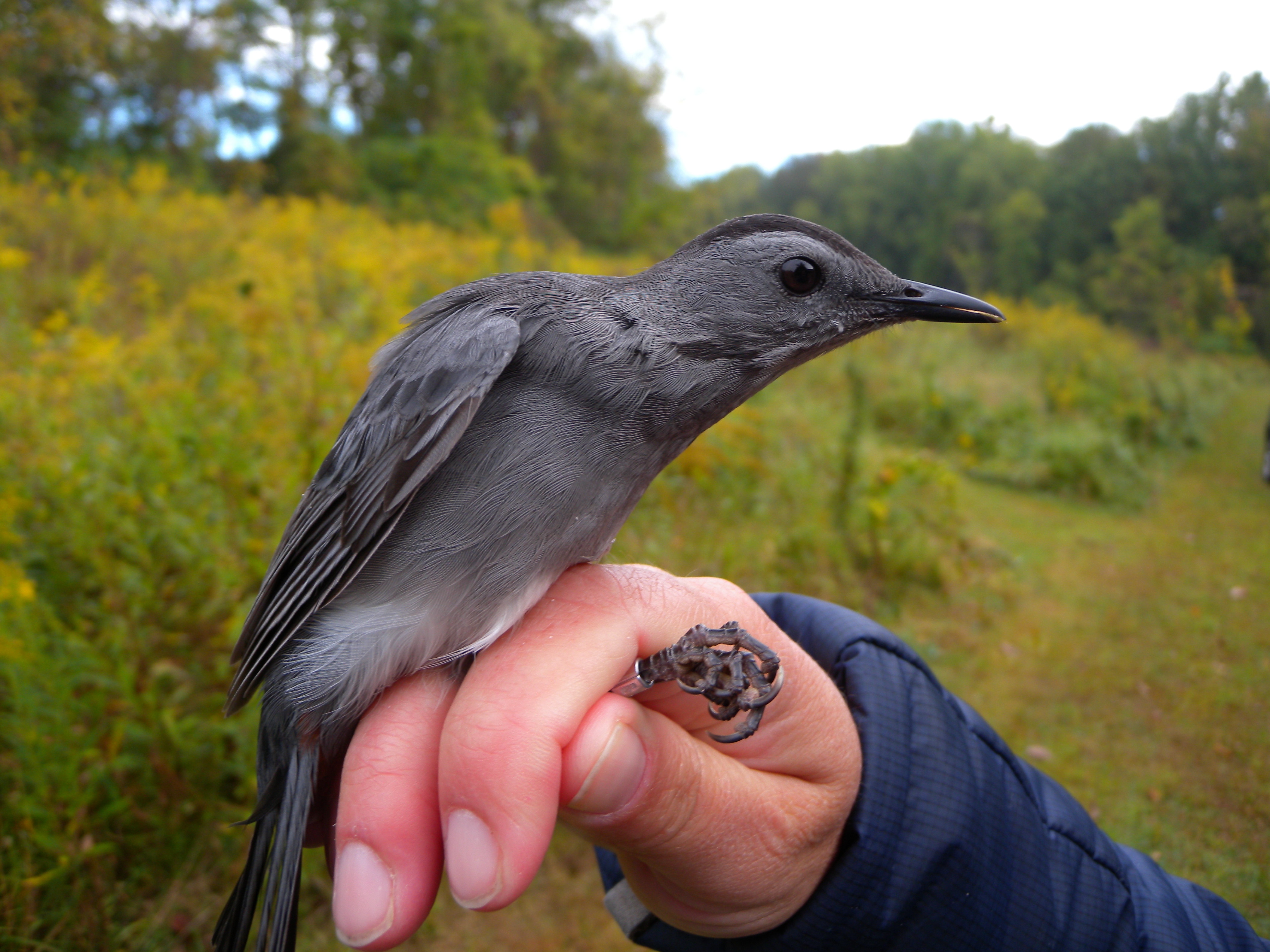
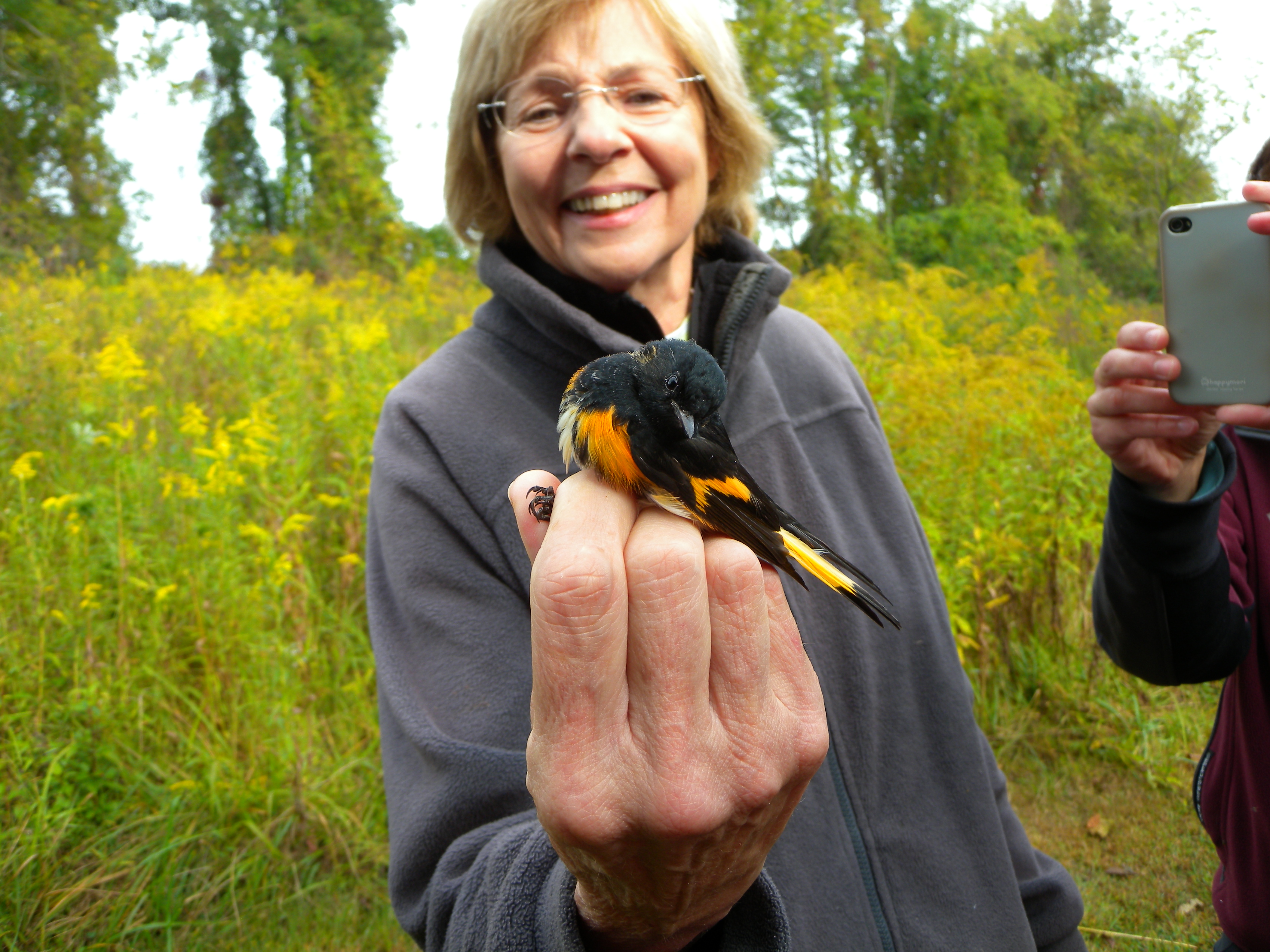
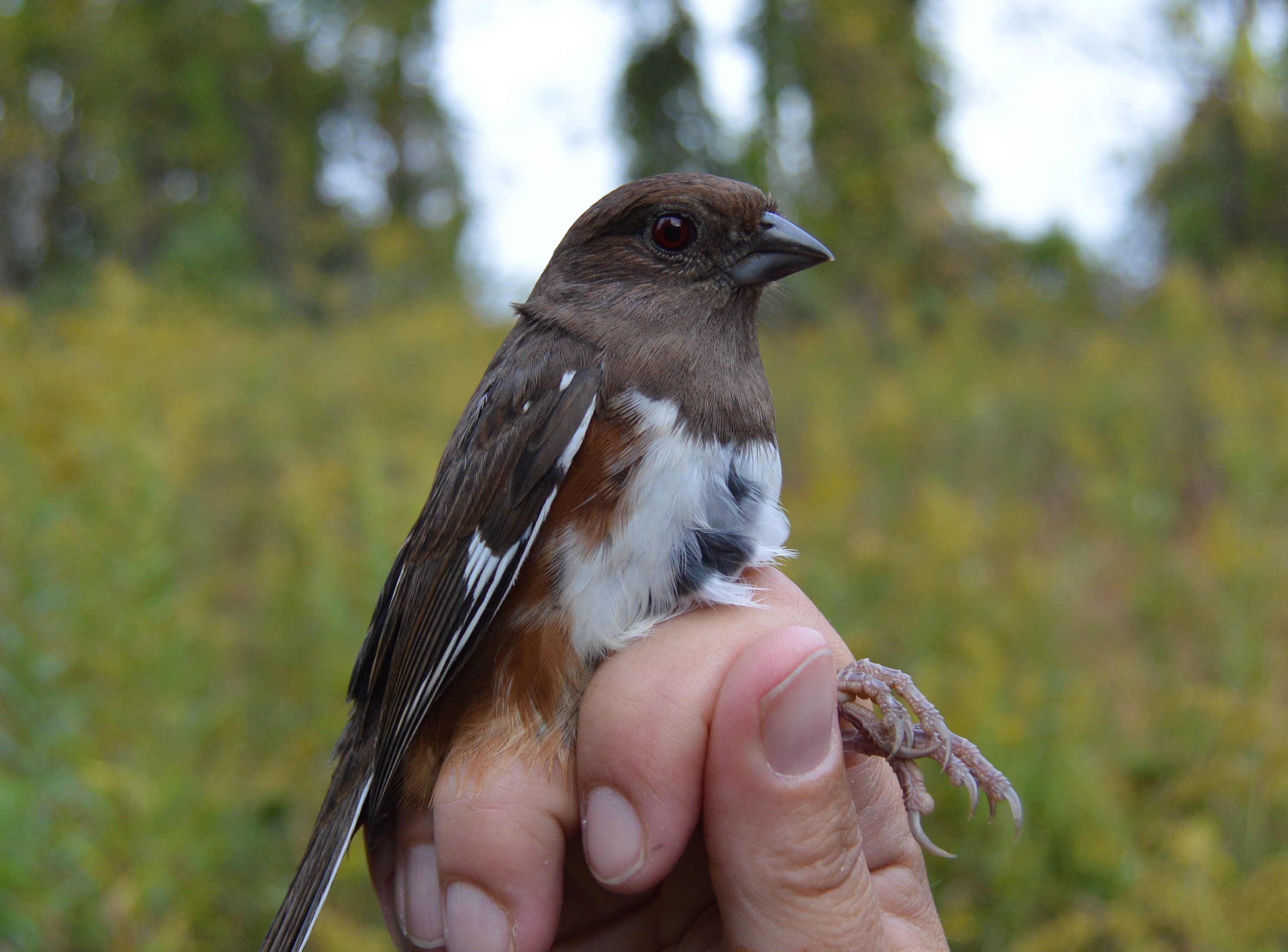


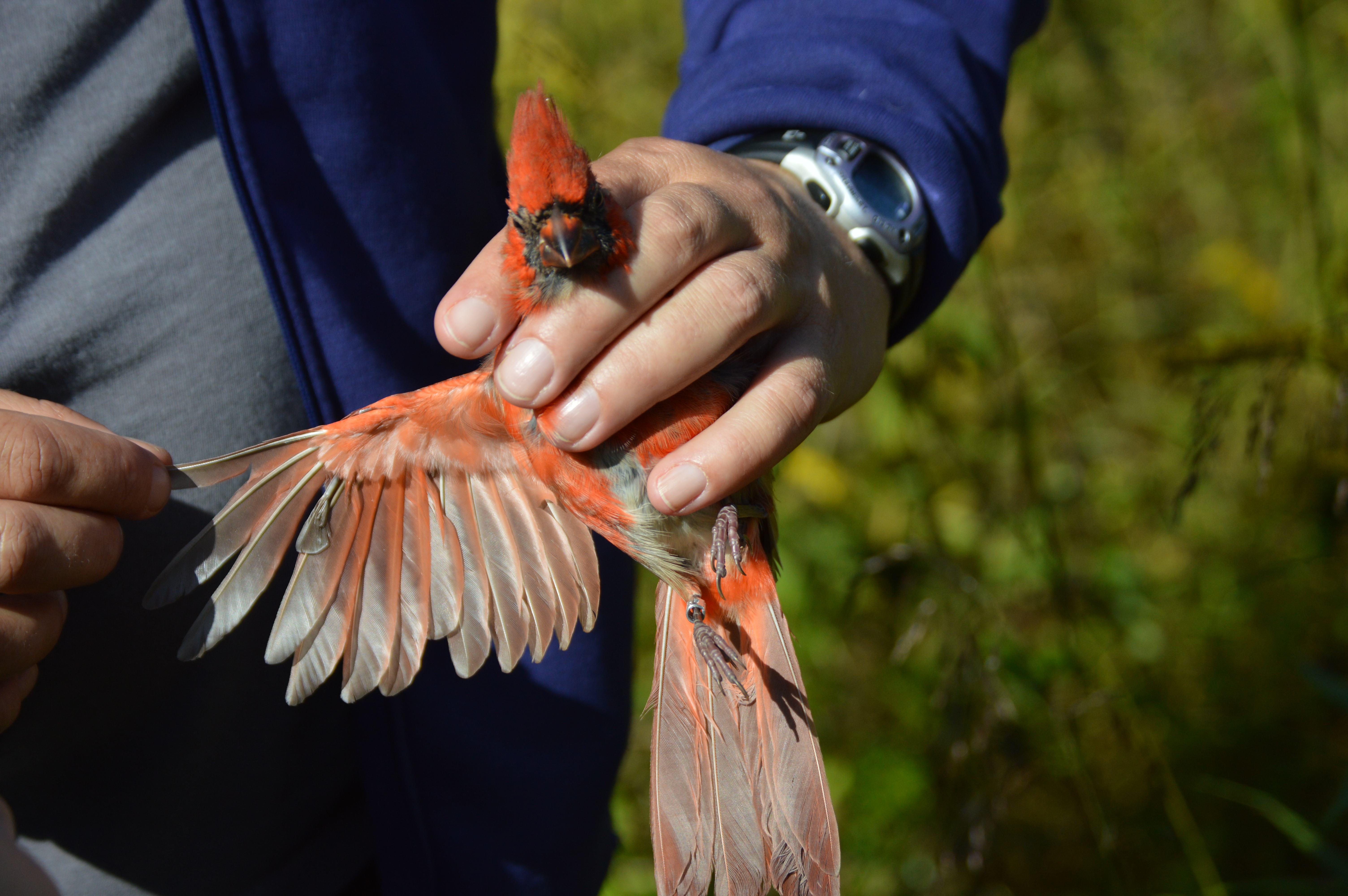
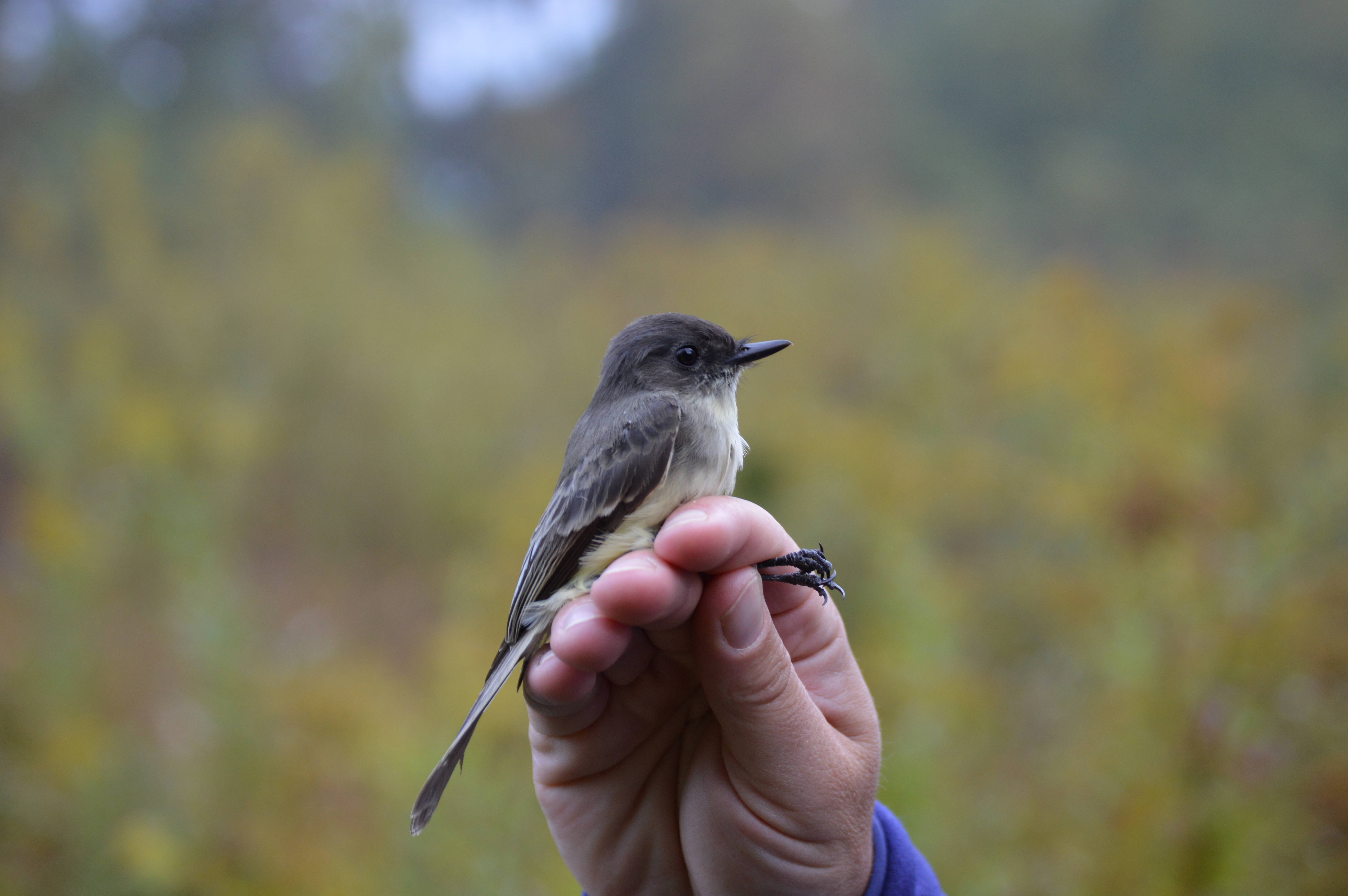
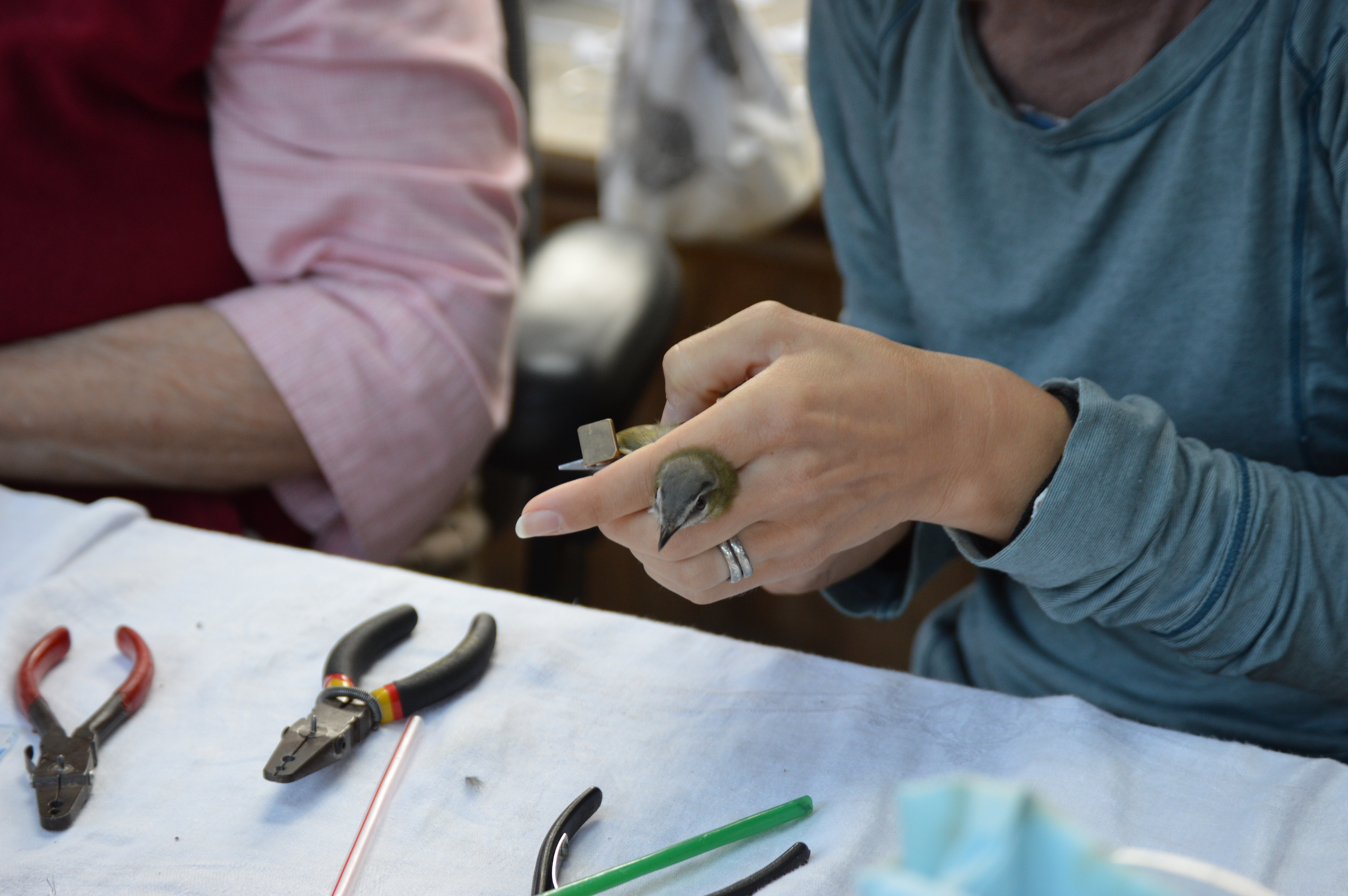
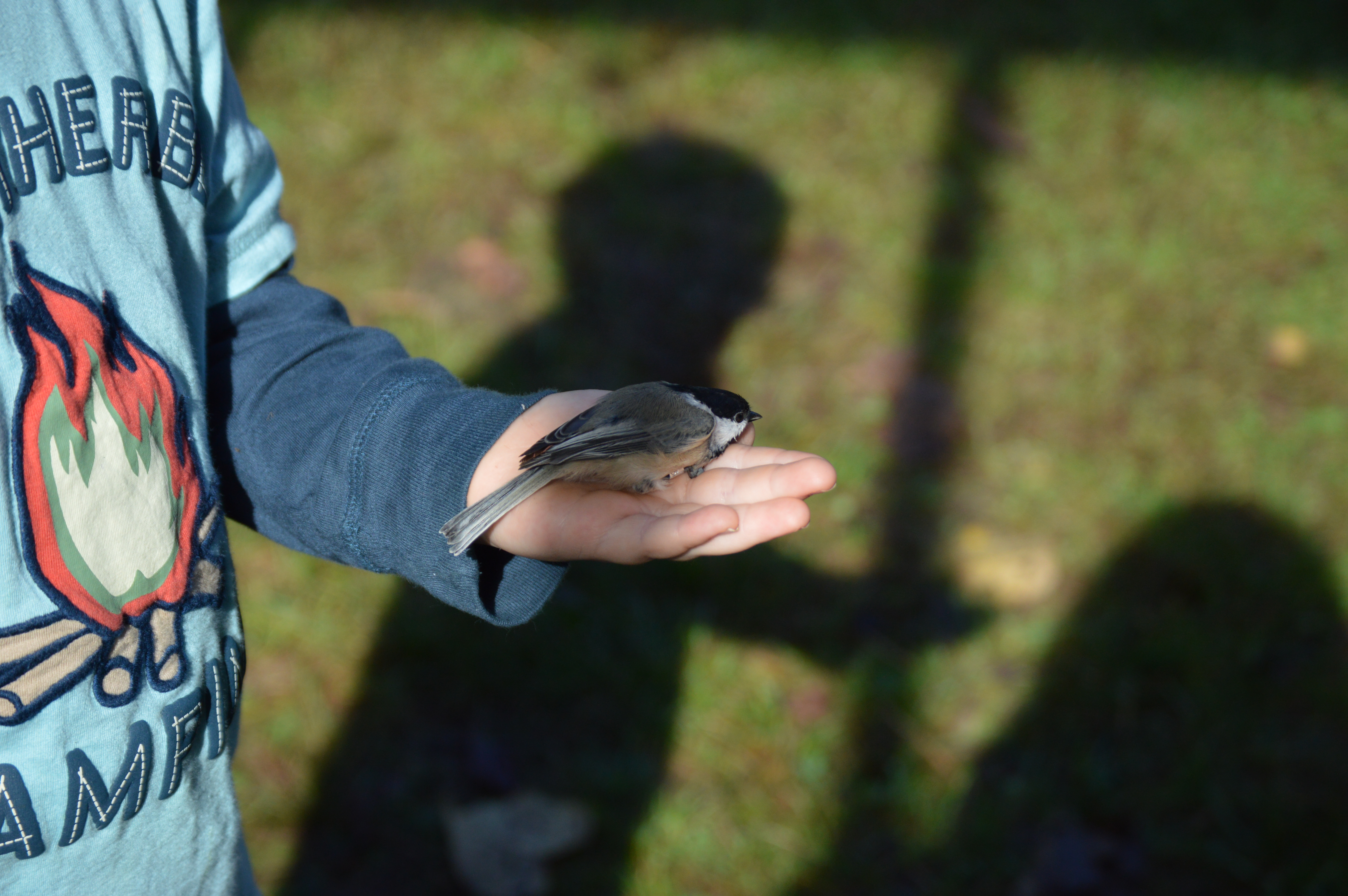

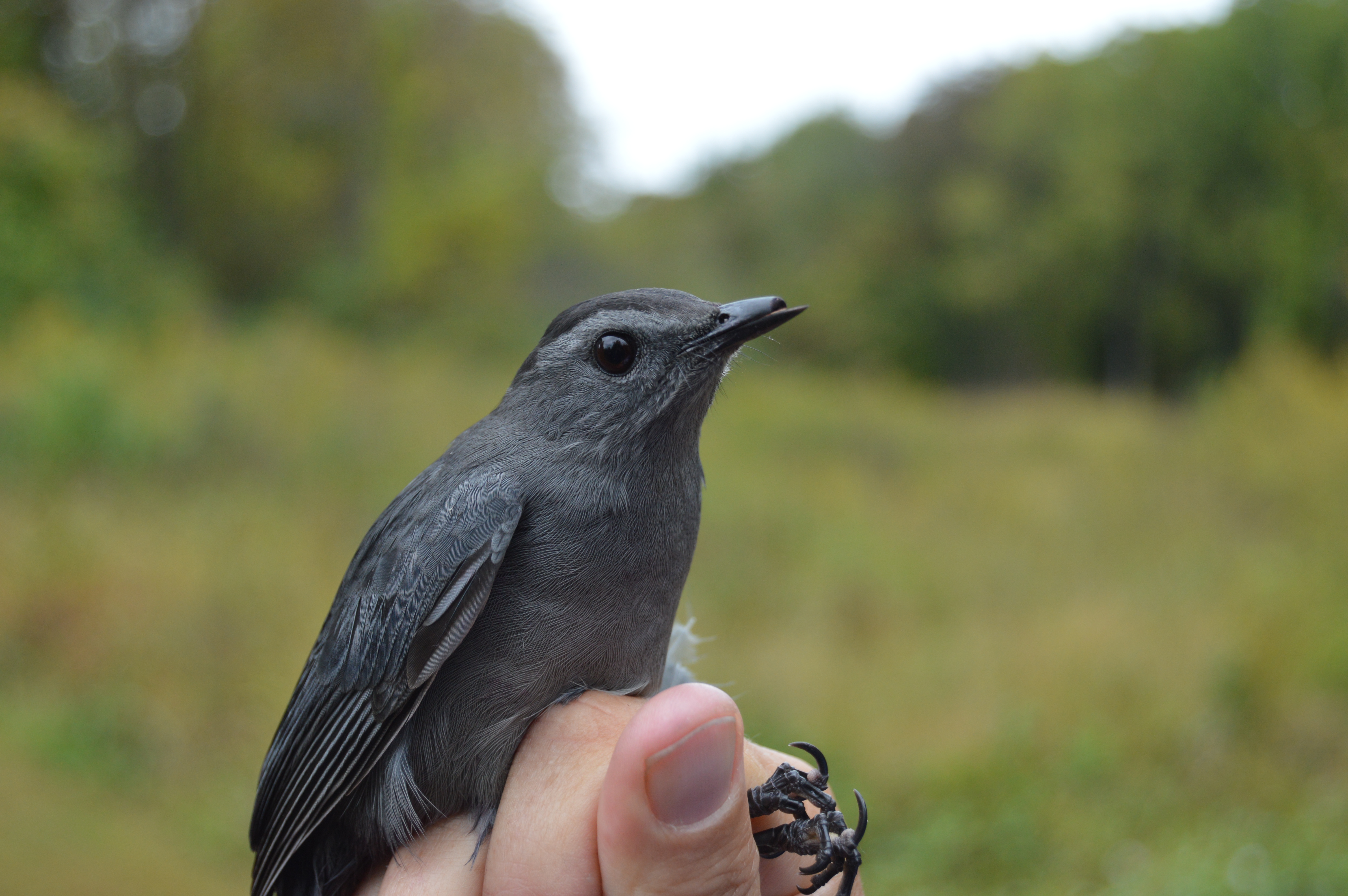
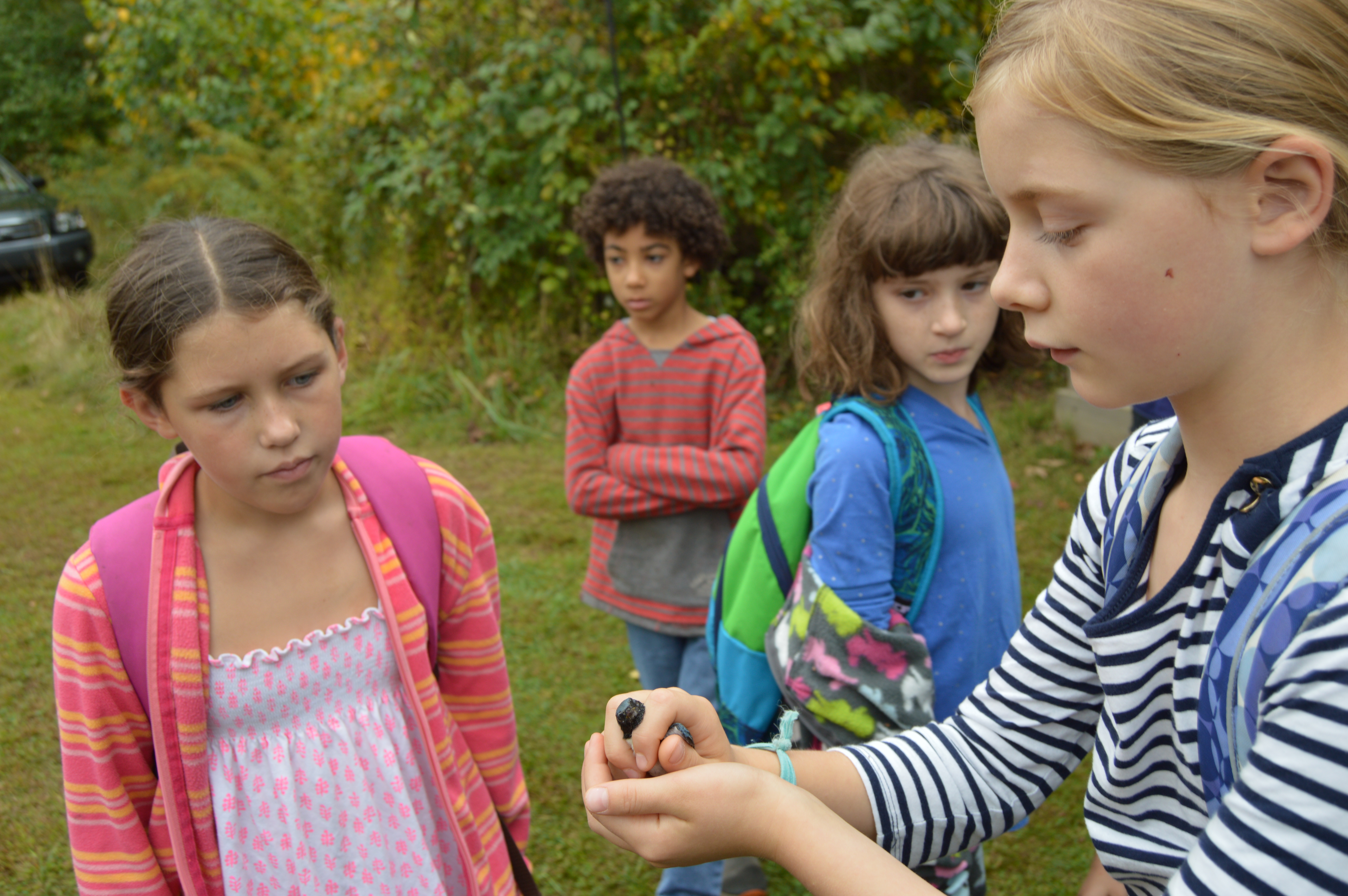


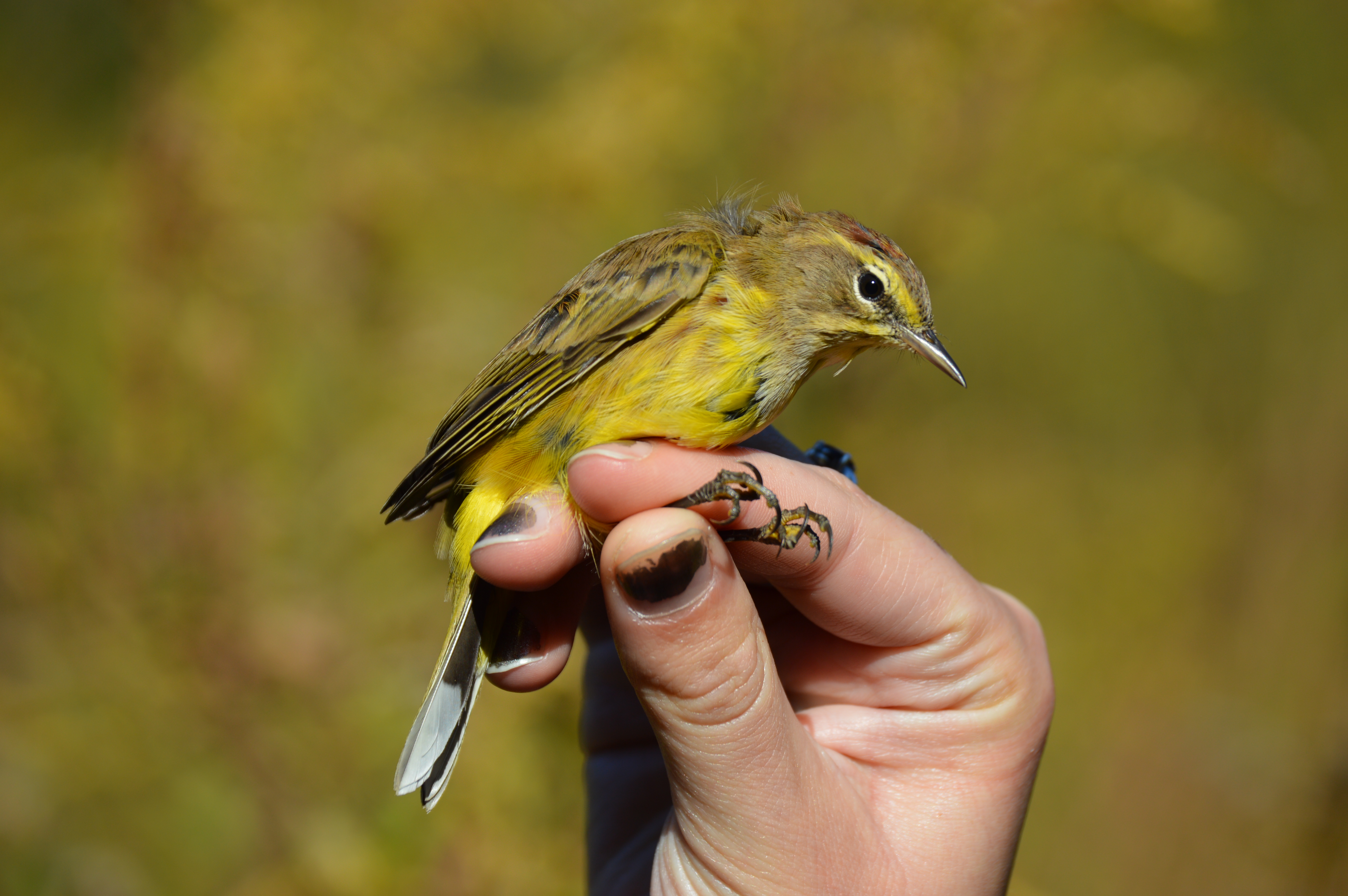
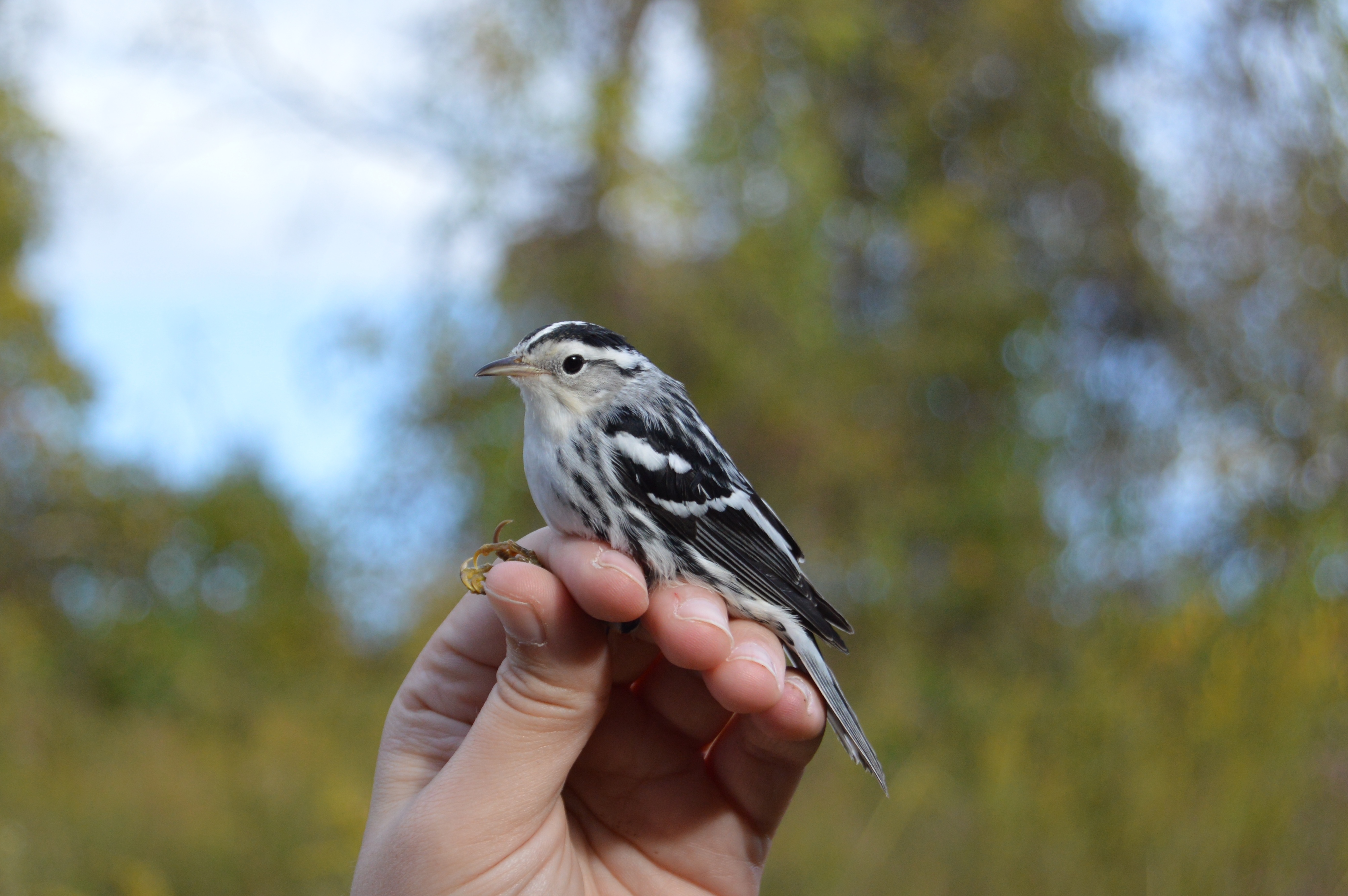

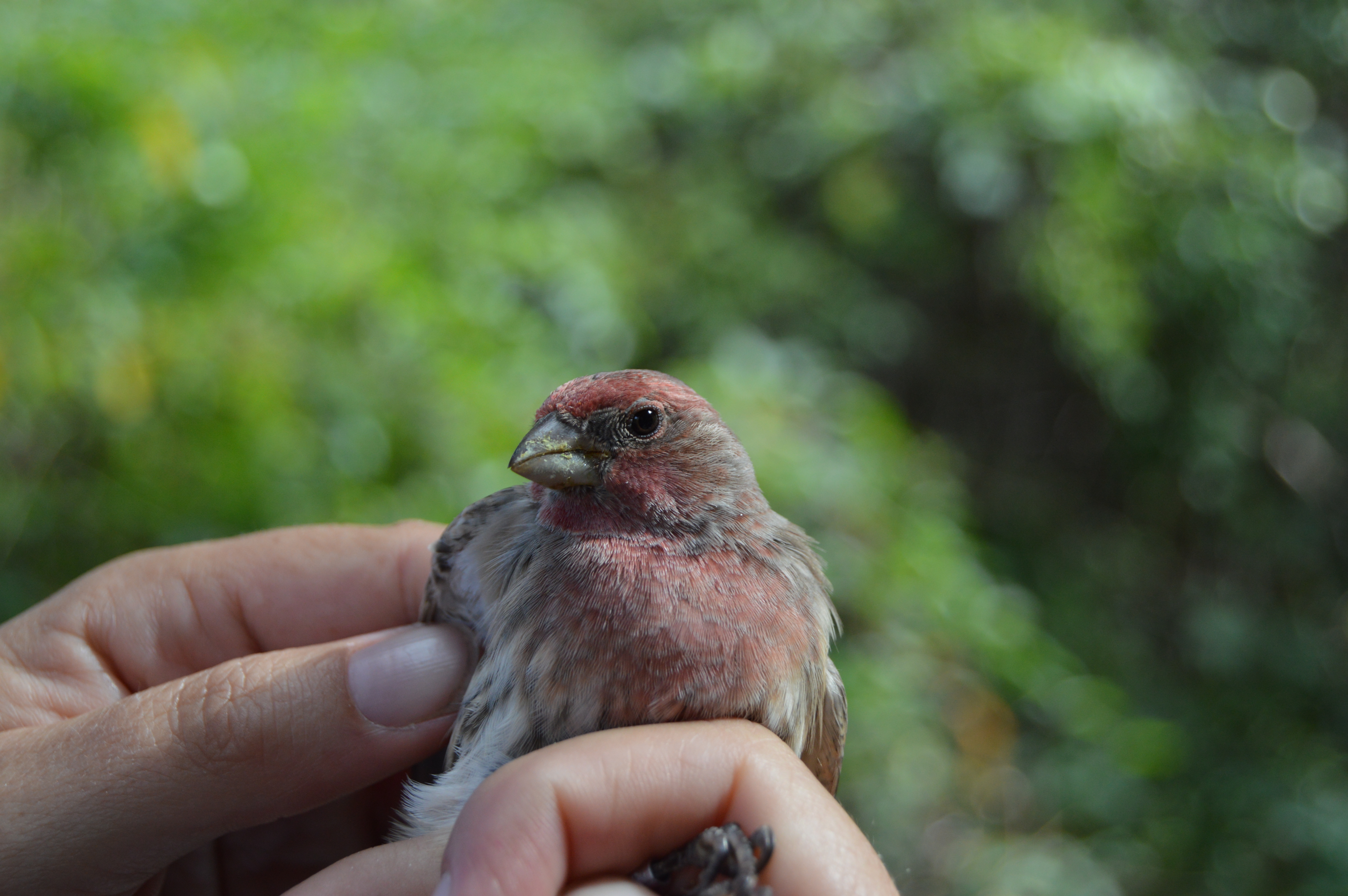

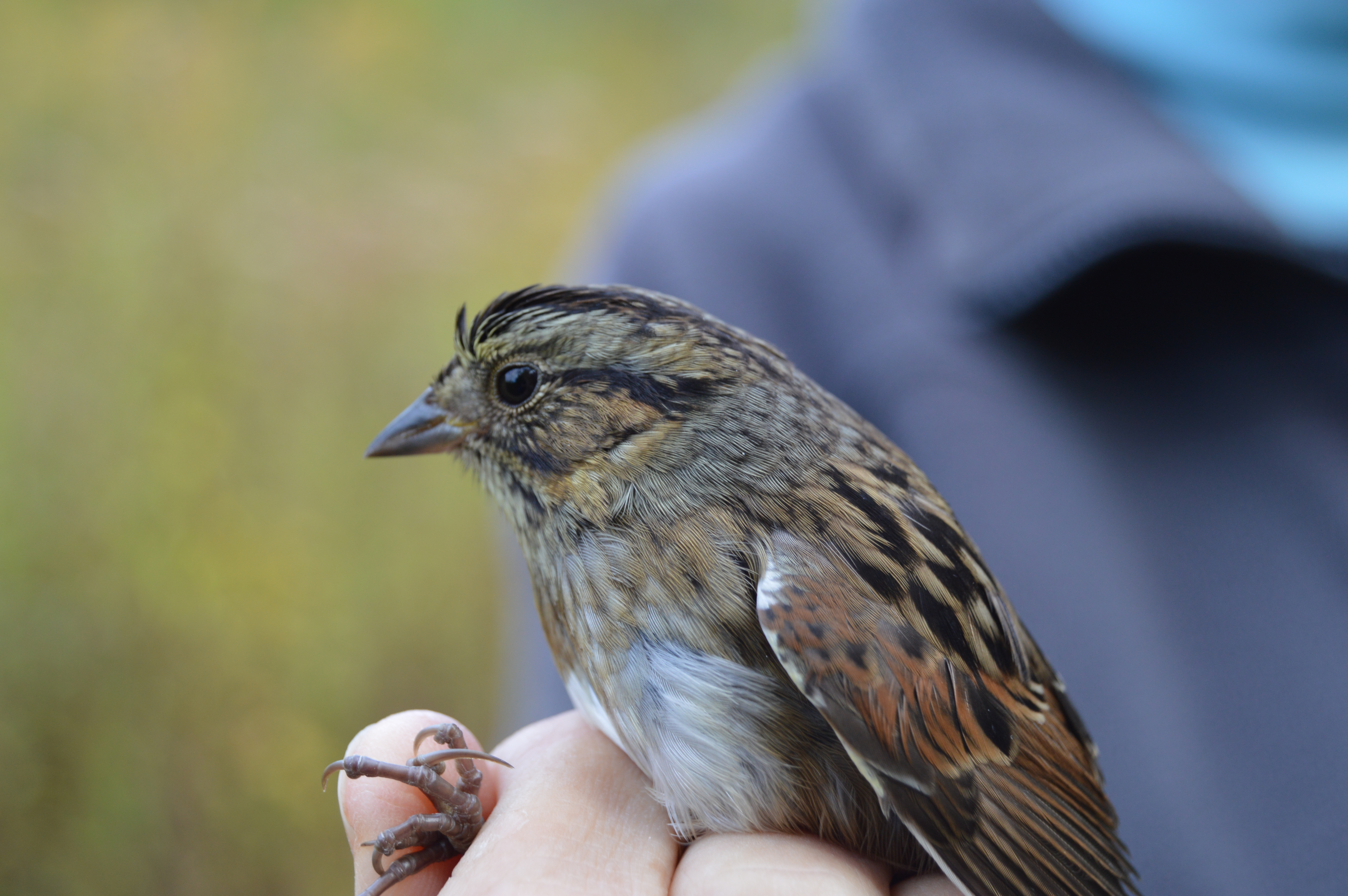
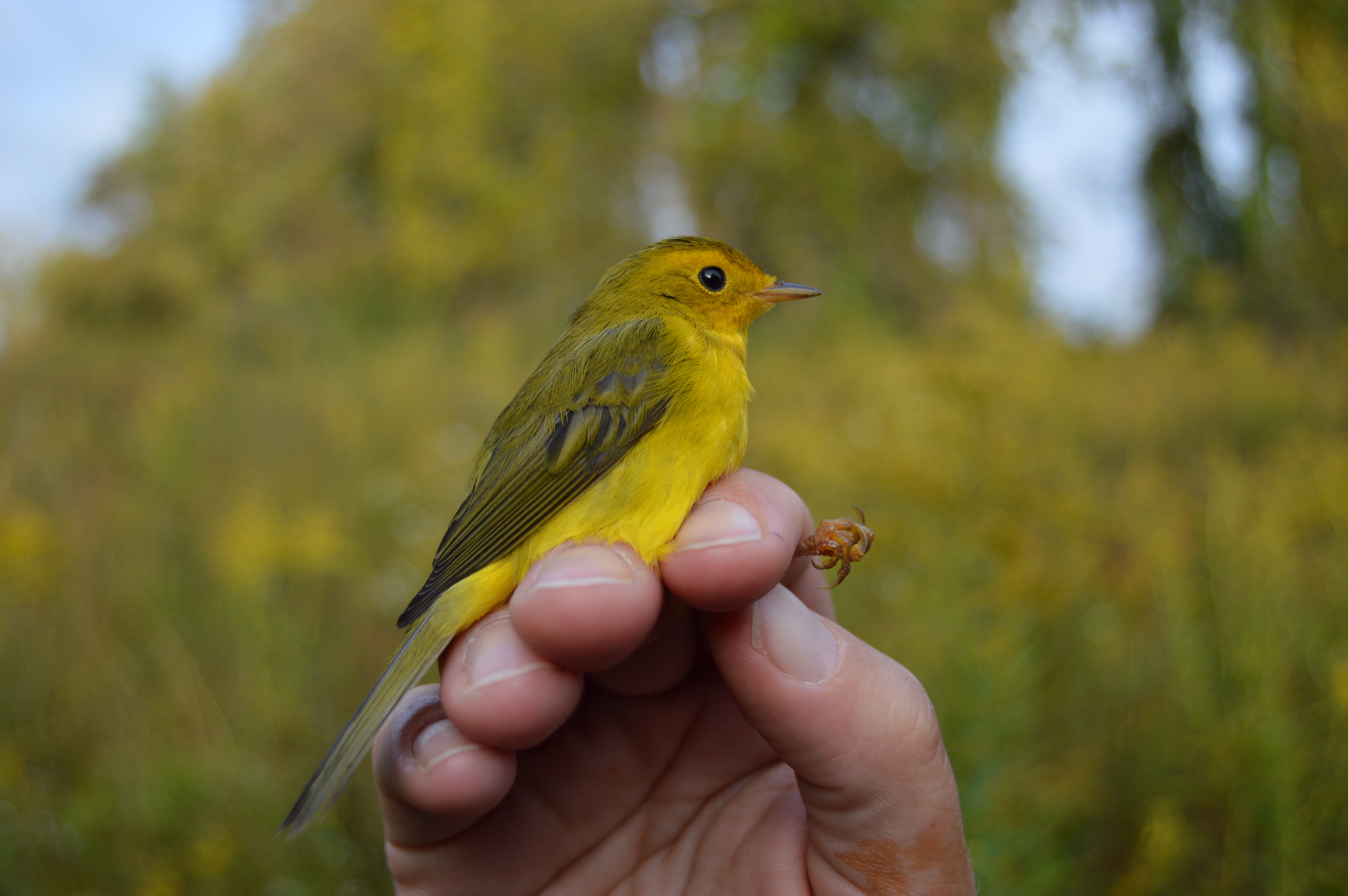
Get Your Fill of Fall Feathers!

It’s that time of year again folks! The goldenrod at Rushton is ablaze, which means that fall migration songbird banding is well underway and we’ve been busy! 83 birds in the nets yesterday including 44 Gray Catbirds. A nice assortment of warblers graced our nets last week including Nashvilles, Magnolias, Canadas, Redstarts, Yellowthroats, Chestnut sided, a Worm-eating and our very first ever Bay-breasted!
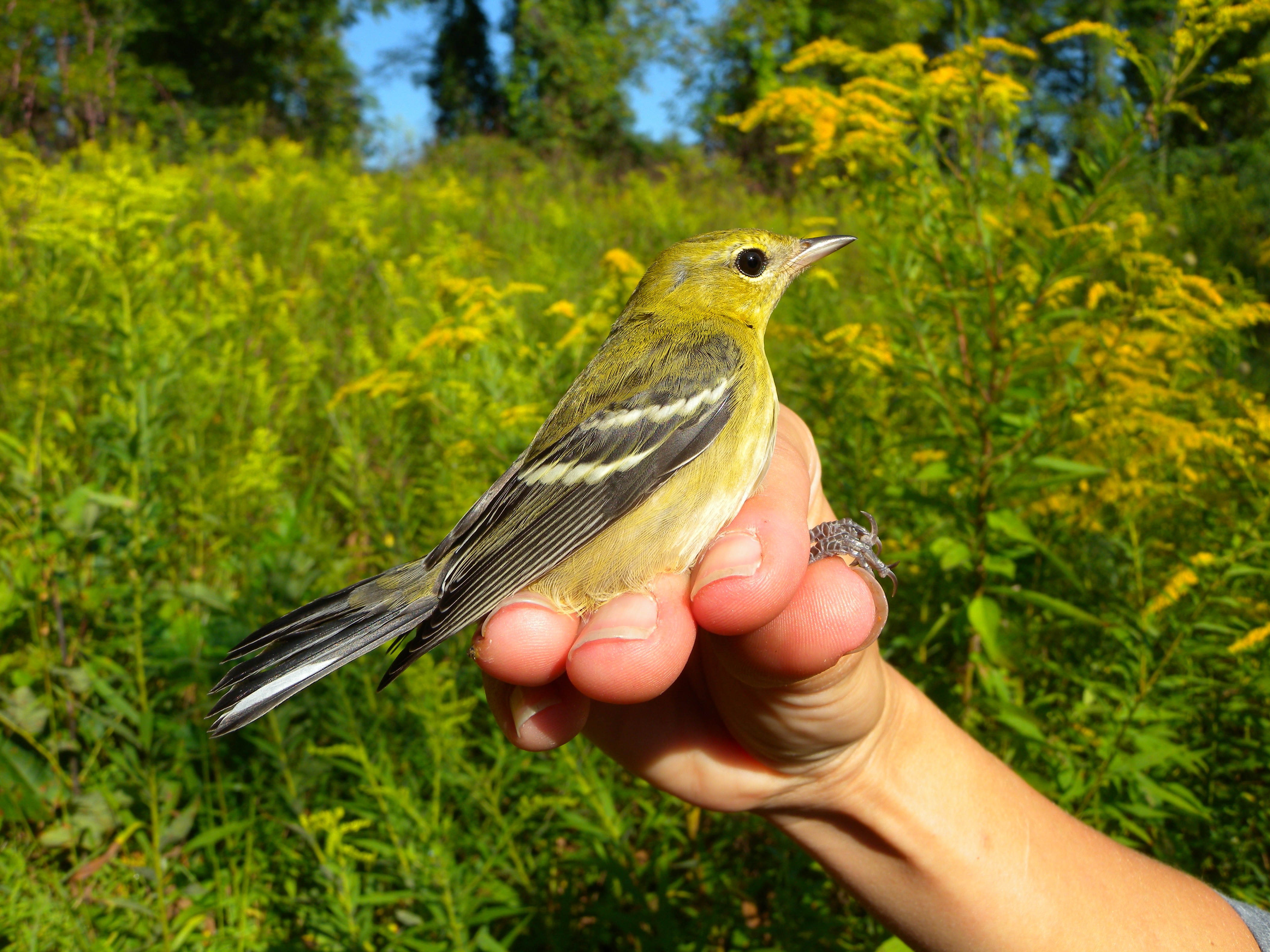

Another first for Rushton was a shockingly beautiful and equally as boisterous Yellow-throated Vireo (pictured above). Northern Waterthrush, Wood Thrush, Veery, Swainson’s Thrush, lots of American Goldfinches, Indigo Buntings, woodpeckers, a Brown Thrasher, Song Sparrows, Field Sparrows, Titmouse, wrens and even a Screech Owl have been banded thus far in what is already shaping out to be a fantastic fall banding season. Last fall, our catch numbered about 1500 birds of about 56 species. Let’s see if we can beat it this year!
We have an open house at the banding station THIS SATURDAY the 13th, so anyone of any age is welcome to stop on by to get your fill of our fabulous fall feathers between the hours of 6am and 10am. Get out of bed and come in your pajamas if you have to- you don’t want to miss this! (The station is also open to public observation every Tuesday and Thursday morning until the end of October).

There’s a lot going on in the woods and in the fields,
Blake
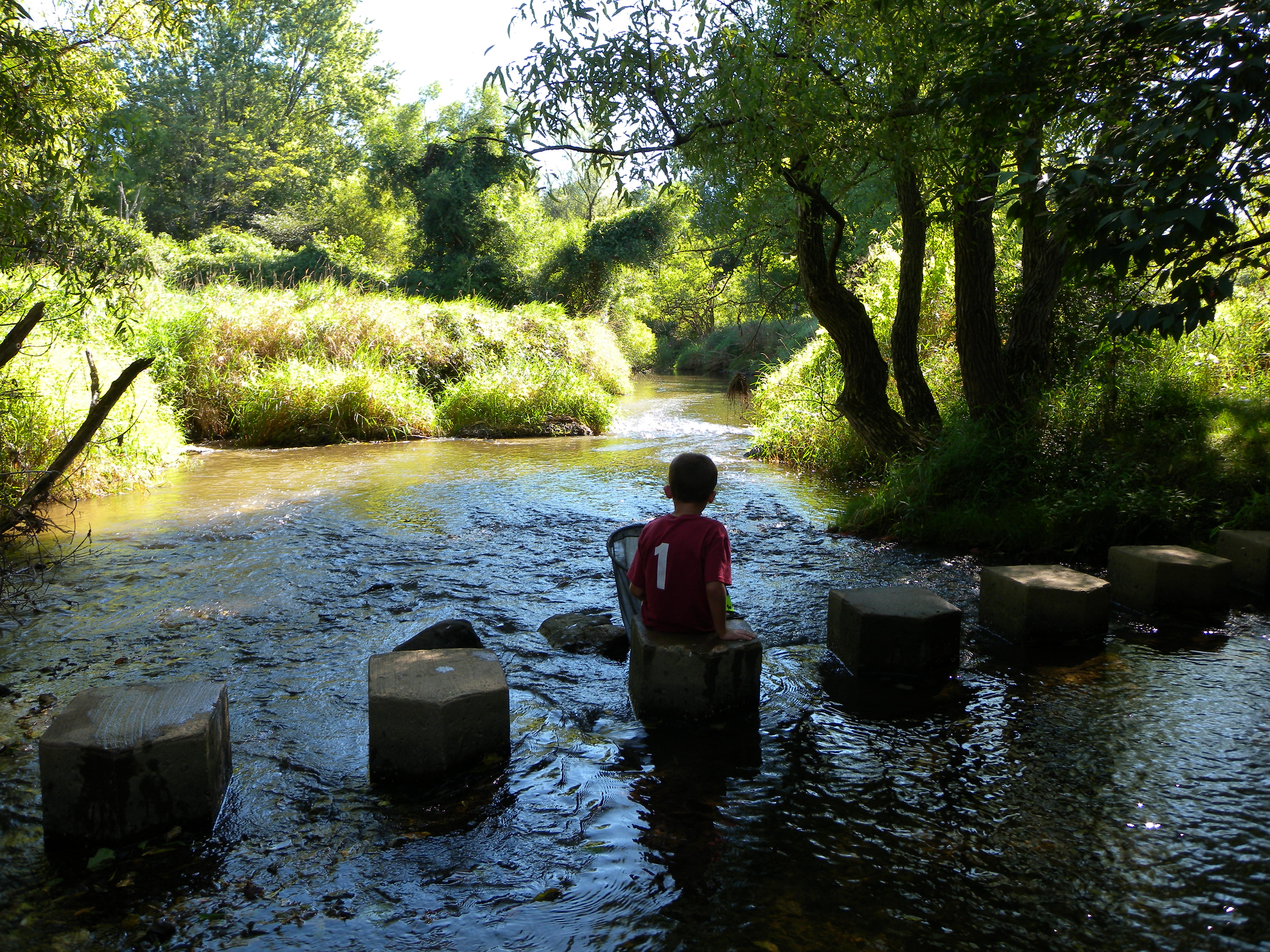
Bird Boxes: Windows into the Lives of Birds, the Mysteries of Nature and the Joy of Conservation

WAIT! If you’re a subscriber reading this in email format, before reading any further, please click on the title of the post right above in order to view the blog in the glory it was meant to have on the actual blog website.
________________________________________________________
One of last year’s accomplishments we are proud of is the initiation and success of our new Homeowner Bird Box Program. The following is an article I wrote about it and the joys of bird box ownership. If you don’t already have bird boxes in your yard, I encourage you to put one up this spring! Better yet, put it up now and you might get a Downy Woodpecker or a bunch of bluebirds roosting in it during these cold winter nights.
It was late March as I stood in front of the porch door, gazing out at the bustling bird feeders set up buffet-style on the railing of our deck. Finches, chickadees, titmice, blue jays, cardinals and wrens were contentedly stuffing their little beaks full of hulled sunflower seeds on this blustery, wintery spring day. As I did every day that winter, I was wistfully waiting for “someone in particular” to appear in front of me at the window feeder stocked with dried mealworms and insect-filled suet balls. My gaze drifted off for a minute until I heard a familiar ‘tap’ on the window as the weight of a bird landed briskly on the feeder.
There before my eyes was the most beautiful deep Mediterranean blue surrounding a round red breast under an inquisitive cocked head peering at me through the class. “They don’t call it the bluebird of happiness for nothing,” I thought as my heart skipped that familiar beat. As he grabbed a dried worm and shot me one last suspicious look before fluttering off, I couldn’t help but notice a twinkle in his eye.
I raced out into the backyard to check the status of our new bluebird box, and sure enough, there he was – and there SHE was- proudly perched on top of the box of which the pair had taken ownership. My spirit took wing with elation and anticipation of the joys that would be mine as guardian of this bird box throughout the coming season!
The thrills of bird box ownership are indeed abundant, as the forty participants in the Willistown Conservation Trust’s (WCT) Homeowner Bird Box Program discovered last year. Through this new program, homeowners were able to advance bird conservation in their own yards by maintaining and monitoring bird boxes that were installed in early spring by a team of WCT bird box experts. The teams visited the properties in the Willistown area, assessed the habitat, offered advice on which particular species of birds could be attracted to that available habitat, and placed the boxes for optimum probability of birds using them.
The WCT experts remained in contact with the homeowners throughout the remainder of the breeding season in order to track the success of the 113 bird boxes that were installed throughout the greater Willistown area. Many of the boxes provided the homeowners with great enjoyment as they and their children watched families of bluebirds, house wrens, chickadees, tree swallows, and kestrels fly in and out of the boxes hundreds of times a day feeding their ravenous nestlings.

Some were lucky enough to witness the fledging, when the young take their first staggering flight out of the box and into the world! There is no better bond formed with nature than when a child gently opens a bird box and has his first peek at a bunch of exquisitely speckled little eggs or tiny baby birds, their wobbly necks outstretched and beaks gaping wide with expectation.


Each species of bird has specific habitat requirements, but sometimes the motto, “if you build it, they will come,” applies in even marginal habitat. One of the homeowners blew the WCT experts away when she called and exclaimed excitedly, “I have bluebirds!!”

She bought a bluebird box but was admonished not to expect bluebirds because she did not have a big enough grassy area in her wooded backyard to suit their ideal habitat needs. Consequently, the bird box experts expected to hear that she had one of the other usual occupants like chickadees or wrens. Not only did the bluebirds take up residence in her “less-than-ideal habitat,” but they successfully fledged two broods of young from that box that summer!

In addition to connecting homeowners to nature, bird boxes also serve as essential conservation tools by providing vital habitat to cavity-nesting birds, many of which are declining. Eastern Bluebird populations in Pennsylvania, for example, were down by 90% in the mid-1900s as a result of habitat loss, pesticides, and competitive invasive species like House Sparrows and European Starlings.
Today, our bluebird has recovered because of closely monitored nest boxes that are safeguarded against invasive competition. However, it is still threatened, like many other insect-eating birds, by pesticide use on lawns and agricultural lands. There are a host of other serious pressures facing our birds today: from feral and house cats killing 3 billion birds annually in the U.S. alone to window collisions killing up to 1 billion birds annually. It’s no wonder we’ve lost half of the birds that filled the skies just 40 years ago.
Dick Eales, the Chair of WCT’s Bird Conservation Committee, was the go-getter who dreamt up this addition to WCT’s outreach activities in order to benefit as many birds as possible. Additionally ,the Bird Box Program helps engage more people in conservation and provides the opportunity to raise awareness about the need to not only protect the natural areas we have left, but to begin to see our yards as habitat.
When people understand that conservation can happen in their own backyards, suddenly that long awaited bluebird of happiness taps on the window.
Blake
Visit nestwatch.org to learn about nests and get involved with the Cornell Lab of Ornithology’s citizen science project.

- « Previous Page
- 1
- …
- 8
- 9
- 10
- 11
- 12
- …
- 24
- Next Page »

